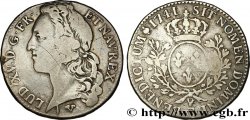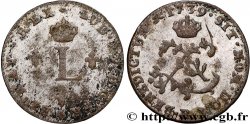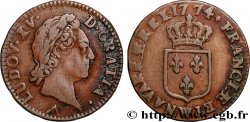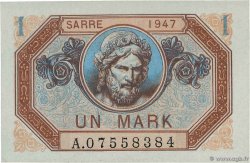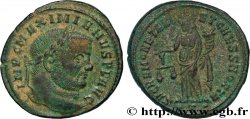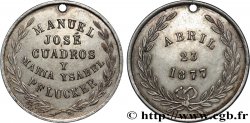Live auction - bry_667806 - LOUIS XV THE BELOVED Écu à la croix fleurdelisée couronnée et aux huit L 1725 Pau
You must signin and be an approved bidder to bid, LOGIN TO BID. Accounts are subject to approval and the approval process takes place within 48 hours. Do not wait until the day a sale closes to register. Clicking on "BID" constitutes acceptance of the terms of use of cgb.fr private live auctions.
Bids must be placed in whole Euro amounts only. The sale will start closing at the time stated on the item description; any bids received at the site after the closing time will not be executed. Transmission times may vary and bids could be rejected if you wait until the last second. For further information check the Live auction FAQ
All winning bids are subject to a 18% buyer’s fee.
All winning bids are subject to a 18% buyer’s fee.
| Estimate : | 3 500 € |
| Price : | no bid |
| Maximum bid : | no bid |
| End of the sale : | 15 June 2021 16:50:00 |
Type : Écu à la croix fleurdelisée couronnée et aux huit L
Date: 1725
Mint name / Town : Pau
Quantity minted : 342001
Metal : silver
Millesimal fineness : 917 ‰
Diameter : 38 mm
Orientation dies : 6 h.
Weight : 21,38 g.
Edge : [(fleuron) DOMINE (fleuron) (lis) (fleuron) SALVUM (fleuron) FAC (fleuron) (lis) (fleuron) (fleuron) REGEM]
Rarity : R3
Coments on the condition:
Cet écu est frappé sur un flan large et légèrement irrégulier et présente une forte concrétion noire
Catalogue references :
Predigree :
Exemplaire avec des concrétions caractéristiques des exemplaires découverts dans l’épave du chameau
Obverse
Obverse legend : LUD. XV D. G. FR. - ET. NA. RE. (DB).
Obverse description : Buste de Louis XV lauré, drapé et cuirassé à droite à l'antique, vu de trois quarts en avant avec un soleil sur la cuirasse ; au-dessous (Mm).
Obverse translation : (Louis XV, par la grâce de Dieu, roi de France et de Navarre).
Reverse
Reverse legend : (MG) SIT. NOMEN. DOM. - (VACHE) - .BENEDICT. 1725.
Reverse description : Croix formée de quatre lis couronnés, cantonnée quatre groupe de deux L adossées.
Reverse translation : (Béni soit le nom du Seigneur).
Commentary
D’après nos recherches en archives, 342.001 écus ont été frappés à Pau en 1725 pour un poids de 32.929 marcs 3 onces 6 deniers. Ces monnaies furent mises en circulation suite à 74 délivrances entre le 8 janvier et le 24 décembre 1725. 74 exemplaires ont été mis en boîte, à raison d’une pièce en boîte par délivrance. Monnaie de la plus grande rareté pour le Béarn.







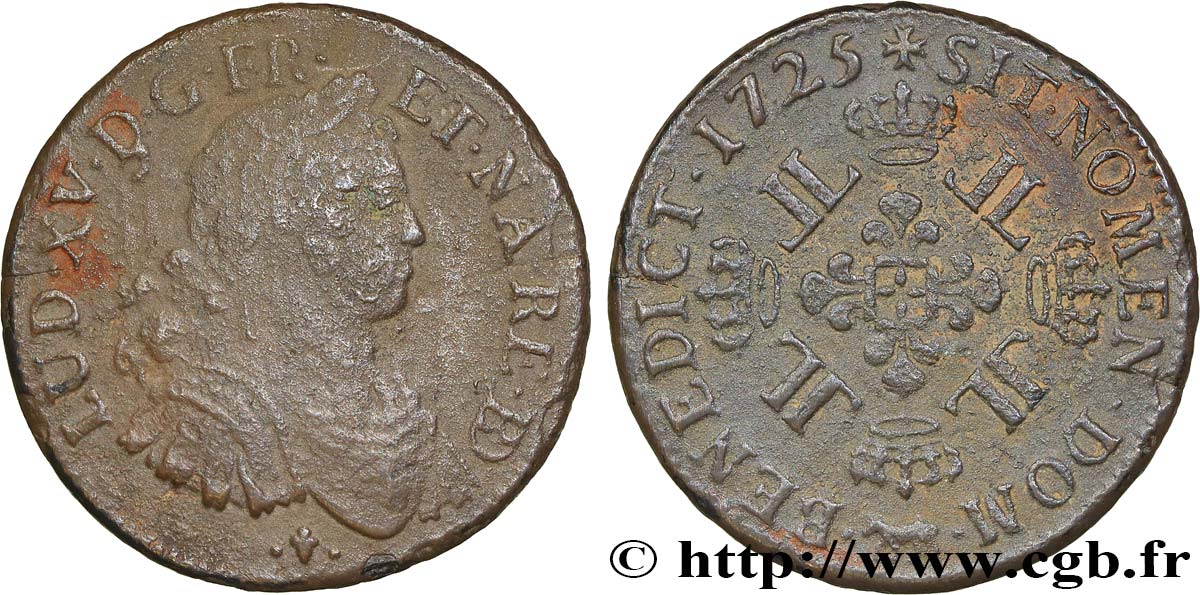
 Report a mistake
Report a mistake Print the page
Print the page Share my selection
Share my selection Ask a question
Ask a question Consign / sell
Consign / sell
 Full data
Full data